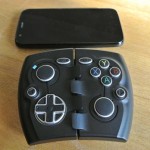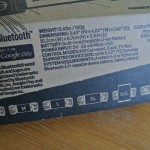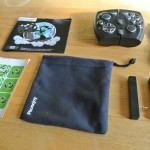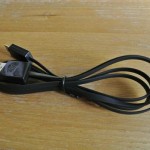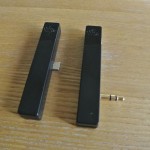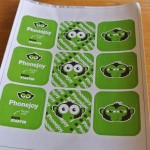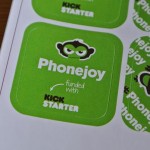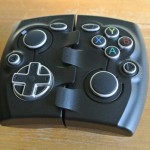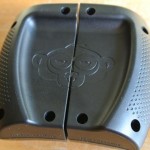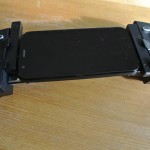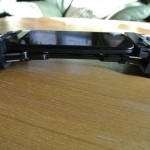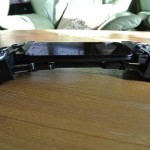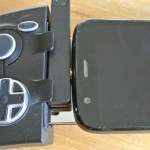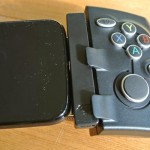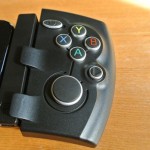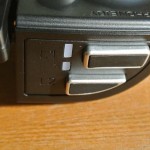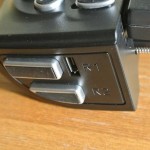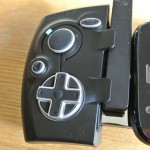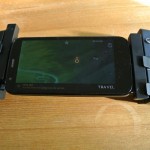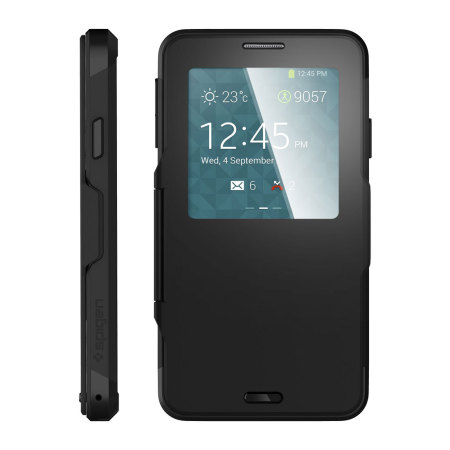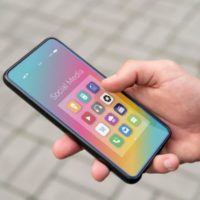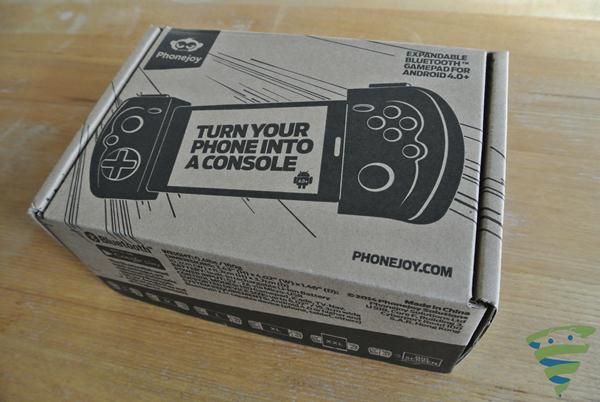 As a gamer, I’ve found the mobile gamepad space to be disappointingly quiet lately, particularly for Android. There’s been no real new player recently, and the last significant announcement in mobile gaming hardware has been the MOGA Power Series. While that and other controllers are perfectly exciting in their own right, I’ve been waiting to see what else others will try to unseat the dominance than PowerA has exerted now through its MOGA controllers. Thankfully, PhoneJoy is finally fulfilling its Kickstarter promises and has shipped out the PhoneJoy Play Gamepad with its alternative configuration to its waiting backers. We’ve been lucky enough to get our hands on one which we’ll be taking a look at today.
As a gamer, I’ve found the mobile gamepad space to be disappointingly quiet lately, particularly for Android. There’s been no real new player recently, and the last significant announcement in mobile gaming hardware has been the MOGA Power Series. While that and other controllers are perfectly exciting in their own right, I’ve been waiting to see what else others will try to unseat the dominance than PowerA has exerted now through its MOGA controllers. Thankfully, PhoneJoy is finally fulfilling its Kickstarter promises and has shipped out the PhoneJoy Play Gamepad with its alternative configuration to its waiting backers. We’ve been lucky enough to get our hands on one which we’ll be taking a look at today.
What’s in the box
 There is a surprising amount of gear in the PhoneJoy box. Inside, not only will you find the PhoneJoy gamepad itself, you’ll also find a micro-USB cable used for charging the device, an audio jack connector, a micro-USB connector, a small carry bag for everything to be stored in, and a series of adorable, PhoneJoy themed stickers.
There is a surprising amount of gear in the PhoneJoy box. Inside, not only will you find the PhoneJoy gamepad itself, you’ll also find a micro-USB cable used for charging the device, an audio jack connector, a micro-USB connector, a small carry bag for everything to be stored in, and a series of adorable, PhoneJoy themed stickers.
 If you’re not familiar with the PhoneJoy Kickstarter, the idea behind it was to create a mobile gamepad not unlike the Logitech Powershell controller. The aim was to make it adjustable so that it would be compatible with pretty much all Android smartphones and most phablets; of course, being a Bluetooth device, it can also be used without the device being in its harness, opening up its use to tablets as well. To fit your smartphone within the controller, the two sides of the controller are joined by a really neat spring-loaded mechanism which keeps your device (which will usually be mounted in landscape) snugly within the PhoneJoy while you’re playing. As this generally blocks the audio and micro-USB ports from being directly accessed, there are audio and micro-USB connectors that are supplied can be added so that you are able to use these ports while playing games.
If you’re not familiar with the PhoneJoy Kickstarter, the idea behind it was to create a mobile gamepad not unlike the Logitech Powershell controller. The aim was to make it adjustable so that it would be compatible with pretty much all Android smartphones and most phablets; of course, being a Bluetooth device, it can also be used without the device being in its harness, opening up its use to tablets as well. To fit your smartphone within the controller, the two sides of the controller are joined by a really neat spring-loaded mechanism which keeps your device (which will usually be mounted in landscape) snugly within the PhoneJoy while you’re playing. As this generally blocks the audio and micro-USB ports from being directly accessed, there are audio and micro-USB connectors that are supplied can be added so that you are able to use these ports while playing games.
How does it perform?
 Connecting your PhoneJoy to your mobile device is no different than connecting any Bluetooth device; all you do is switch your PhoneJoy on and search for nearby devices on your phone. Probably the most difficult part of getting your device set up for gaming with the PhoneJoy is actually getting your device wedged inside. While there are clear instructions on how to do this, I still found it quite fiddly to essentially shoehorn my Moto G into the PhoneJoy’s harness. Once there, though, the real fun can begin.
Connecting your PhoneJoy to your mobile device is no different than connecting any Bluetooth device; all you do is switch your PhoneJoy on and search for nearby devices on your phone. Probably the most difficult part of getting your device set up for gaming with the PhoneJoy is actually getting your device wedged inside. While there are clear instructions on how to do this, I still found it quite fiddly to essentially shoehorn my Moto G into the PhoneJoy’s harness. Once there, though, the real fun can begin.
 As with most Bluetooth gaming controllers on the market, PhoneJoy also comes with a dedicated Play Store app which is the repository of games that are currently compatible with PhoneJoy; the list of compatible games is pretty exhaustive already with most big name games (read: Gameloft games) already supported and plenty of others in the mix and being added too. The app also serves as a portal to the Play Store if you haven’t already installed (or bought) a particular game, and also has a list of compatible games that you currently have installed.
As with most Bluetooth gaming controllers on the market, PhoneJoy also comes with a dedicated Play Store app which is the repository of games that are currently compatible with PhoneJoy; the list of compatible games is pretty exhaustive already with most big name games (read: Gameloft games) already supported and plenty of others in the mix and being added too. The app also serves as a portal to the Play Store if you haven’t already installed (or bought) a particular game, and also has a list of compatible games that you currently have installed.
The actual controls that you will have available to you are the same as console controllers: a left and right joystick, directional pad, start and back buttons, A/B/Y/X buttons and 4 bumpers on the top of the device. Naturally, most games don’t need this many controls, but it’s nice to know the flexibility is there if you are more used to console controller layouts. The buttons themselves are generally good and functional, except the directional pad which isn’t terribly great (thankfully you won’t really need it all that much). Once launched, depending on the game you are playing, you may need to set up your controls, however, your experiences may vary; in Reaper, all the controls were already mapped and didn’t need any tweaking. Dead Trigger 2, however, needed full mapping of controls to be done manually. Luckily, games that do support controllers generally have a very easy to use menu to customize controls and you’ll be playing before too long.
 The construction for most of the controller, bar the spring-loaded mechanism, is plastic. While it’s not quite the same quality as a Xbox or PlayStation controller, it does serve the purpose quite well, particularly seeing as this is its first release iteration. Obviously, there are some questionable parts, like the switches being able to be inadvertently removed by brushing against them, but they are easily replaced and I was never presented with the case where the controller would stop operating as planned. The battery inside the PhoneJoy is quoted as lasting 10 hours, but from my playtesting I would say it errs on the side of slightly less than 10 hours.
The construction for most of the controller, bar the spring-loaded mechanism, is plastic. While it’s not quite the same quality as a Xbox or PlayStation controller, it does serve the purpose quite well, particularly seeing as this is its first release iteration. Obviously, there are some questionable parts, like the switches being able to be inadvertently removed by brushing against them, but they are easily replaced and I was never presented with the case where the controller would stop operating as planned. The battery inside the PhoneJoy is quoted as lasting 10 hours, but from my playtesting I would say it errs on the side of slightly less than 10 hours.
What I like about the PhoneJoy Play Gamepad
 I’m a huge fan of the form factor of the PhoneJoy gamepad. I think it’s about time somebody tried something new and different with the mobile controller, which by now feels like an abandoned playing field. I’ll be the first to say it: I find playing with a MOGA controller slightly weird. I find that the weighting of the controller is strange since the attached device makes it top heavy; with the PhoneJoy, because your device is centred, it feels a lot more natural and balanced to hold.
I’m a huge fan of the form factor of the PhoneJoy gamepad. I think it’s about time somebody tried something new and different with the mobile controller, which by now feels like an abandoned playing field. I’ll be the first to say it: I find playing with a MOGA controller slightly weird. I find that the weighting of the controller is strange since the attached device makes it top heavy; with the PhoneJoy, because your device is centred, it feels a lot more natural and balanced to hold.
 I also love that the PhoneJoy is so portable. In its contracted form, it’s barely bigger than most portable battery packs which makes it the perfect companion for travelling. Plus, it comes with a carry bag, and many of you know how much I love included bags, though I have to say that the bag is on the tight side.
I also love that the PhoneJoy is so portable. In its contracted form, it’s barely bigger than most portable battery packs which makes it the perfect companion for travelling. Plus, it comes with a carry bag, and many of you know how much I love included bags, though I have to say that the bag is on the tight side.
 This next point might seem quite inane, but I’m the type of guy who really enjoys the little things. Everything about the PhoneJoy’s package, from the box, to the illustrated manual, and the Kickstarter stickers, is painstakingly branded and customized; I’m a particularly big fan of the manual which has very detailed instructions spelled out by PhoneJoy’s monkey mascot. You can tell that there is an incredibly passionate team behind this project and it’s great to be seeing the fruits of their labour.
This next point might seem quite inane, but I’m the type of guy who really enjoys the little things. Everything about the PhoneJoy’s package, from the box, to the illustrated manual, and the Kickstarter stickers, is painstakingly branded and customized; I’m a particularly big fan of the manual which has very detailed instructions spelled out by PhoneJoy’s monkey mascot. You can tell that there is an incredibly passionate team behind this project and it’s great to be seeing the fruits of their labour.
What I don’t like about the PhoneJoy Play Gamepad
 I mentioned earlier that getting your device into the PhoneJoy is quite fiddly, and personally I found it uncomfortably so. Essentially you’ll have to either hold the spring-loaded controller apart while you slip your device into the harness, or you’ll have to shoehorn your device in by putting one end in first and pushing against it to extend the springs. There is, of course, also a limitation to the springs, and while it is stated that only 6-inch and lower devices are useable in the PhoneJoy, anything in the 5-inch region becomes a bit more of a challenge to get inside, though perhaps this gets easier over a long time as the springs get more loose.
I mentioned earlier that getting your device into the PhoneJoy is quite fiddly, and personally I found it uncomfortably so. Essentially you’ll have to either hold the spring-loaded controller apart while you slip your device into the harness, or you’ll have to shoehorn your device in by putting one end in first and pushing against it to extend the springs. There is, of course, also a limitation to the springs, and while it is stated that only 6-inch and lower devices are useable in the PhoneJoy, anything in the 5-inch region becomes a bit more of a challenge to get inside, though perhaps this gets easier over a long time as the springs get more loose.
 I’m not quite sure what I expected in terms of default button configurations, because I don’t remember needing to configure the controls with the MOGA controllers. But the added necessity of setting up controls before even being able to play is a bit cumbersome. I appreciate the flexibility and having the ability to have a full set of console buttons is fantastic, however it’s not the friendliest if you want to get into certain games very quickly.
I’m not quite sure what I expected in terms of default button configurations, because I don’t remember needing to configure the controls with the MOGA controllers. But the added necessity of setting up controls before even being able to play is a bit cumbersome. I appreciate the flexibility and having the ability to have a full set of console buttons is fantastic, however it’s not the friendliest if you want to get into certain games very quickly.
 A minor peeve of mine with the PhoneJoy is the actual design of the control layout. While the PhoneJoy does have the same number of buttons as a console controller, the layout doesn’t quite feel as intuitive as a console controller would to hold and operate; this refers mostly to the bumper buttons on top of the device which I found to be awkwardly positioned given the way that you hold the PhoneJoy.
A minor peeve of mine with the PhoneJoy is the actual design of the control layout. While the PhoneJoy does have the same number of buttons as a console controller, the layout doesn’t quite feel as intuitive as a console controller would to hold and operate; this refers mostly to the bumper buttons on top of the device which I found to be awkwardly positioned given the way that you hold the PhoneJoy.
Final Thoughts
 Despite its pitfalls, I really like the PhoneJoy Play Gamepad and I think it serves as a very good example of how good mobile gaming can be, channelling a more traditional handheld layout and succeeding with an Android game controller where even Logitech and MOGA are afraid to go. I’m a big fan of it and I’m hoping that PhoneJoy continues to grow and challenges MOGA for some stake in the mobile controller market.
Despite its pitfalls, I really like the PhoneJoy Play Gamepad and I think it serves as a very good example of how good mobile gaming can be, channelling a more traditional handheld layout and succeeding with an Android game controller where even Logitech and MOGA are afraid to go. I’m a big fan of it and I’m hoping that PhoneJoy continues to grow and challenges MOGA for some stake in the mobile controller market.
 If you’re interested in picking up a PhoneJoy Play Gamepad, one can be had in one of  three different packages: the Basic package comes with just the controller for $69.90 (and you can only get this if you are referred), the Advanced package contains everything that we had available in this review for $79.90, and the Pro Gamer package comes in at $89.90 and additionally adds a tablet kickstand and hard, moulded travel case. This might seem like a lot, but the PhoneJoy offers just as much and definitely something different to the MOGA Pro Power controller which is in the same price range.
If you’re interested in picking up a PhoneJoy Play Gamepad, one can be had in one of  three different packages: the Basic package comes with just the controller for $69.90 (and you can only get this if you are referred), the Advanced package contains everything that we had available in this review for $79.90, and the Pro Gamer package comes in at $89.90 and additionally adds a tablet kickstand and hard, moulded travel case. This might seem like a lot, but the PhoneJoy offers just as much and definitely something different to the MOGA Pro Power controller which is in the same price range.
You can see each of the packages at PhoneJoy’s product page here, of if you want to find out more about the PhoneJoy Kickstarter campaign, you can take a look at the project page here.
Gallery of photos

